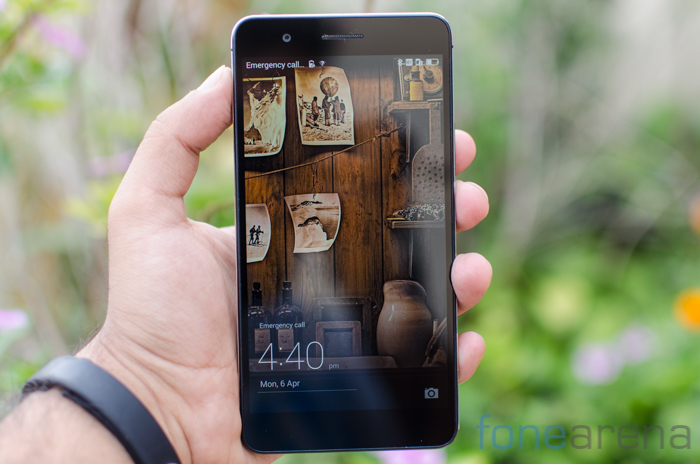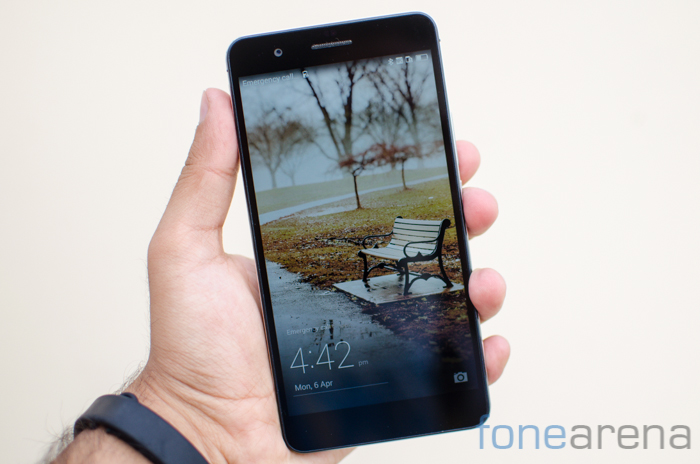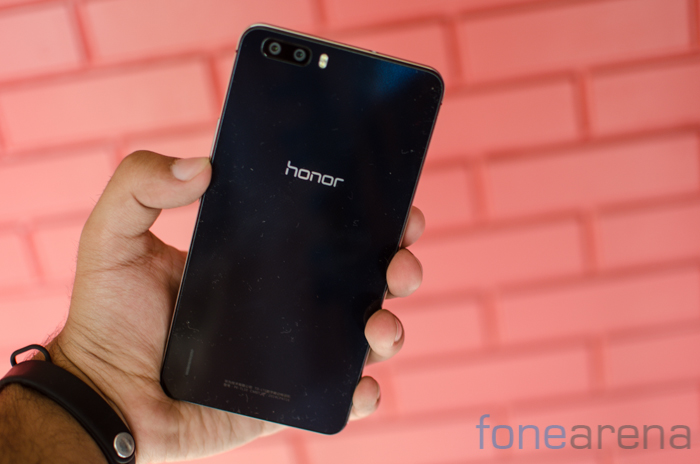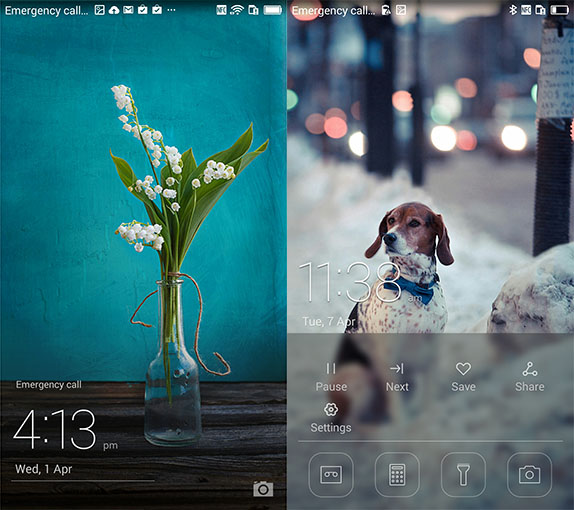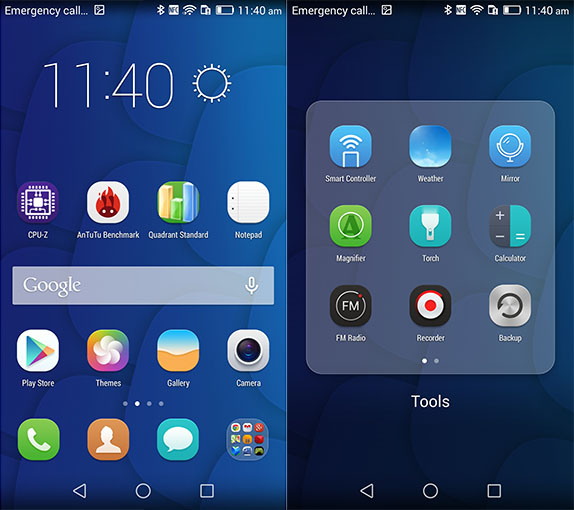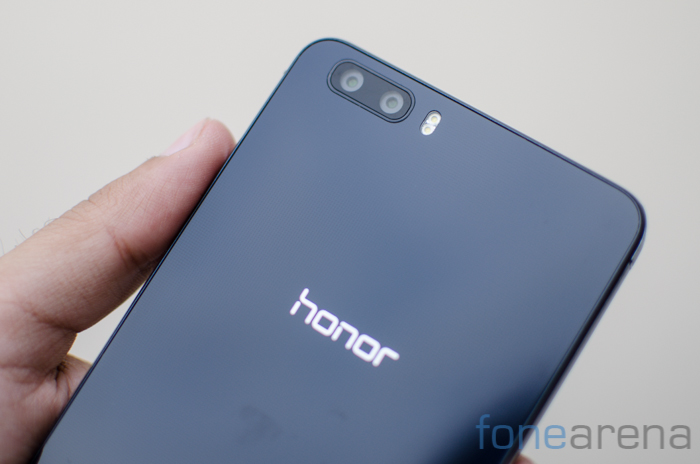Dual rear cameras, high performance silicon and a large screen in a not so gigantic shell. The Huawei Honor 6 Plus certainly ticks a lot of boxes but the discerning buyer is spoilt for choice. Can the latest entrant into the fray hold its own against the competition? We find out exactly that and much more in our review of the Huawei Honor 6 Plus.
Design
The Huawei Honor 6 Plus is a typical example of what we’ve come to expect from Chinese brands. Original design has typically been hard to come across and unfortunately that remains true here as well. To call the Sony Xperia Z3 and the iPhone 5 inspirations for the Honor 6 Plus would be an understatement.The glass back and metallic edge running around the top, left and right of the handset have been lifted straight from the iPhone 5. The metallic edge and in fact even the bottom of the handset have been curved off in exactly the same fashion as the Sony Xperia Z3. This strange love child of the two very different designs will certainly make you raise an eyebrow at your first glance. That said, in it’s favor the design isn’t bad per se. It just isn’t very original and for someone who loves symmetry, the collision of two fairly distinct design languages will be irksome.
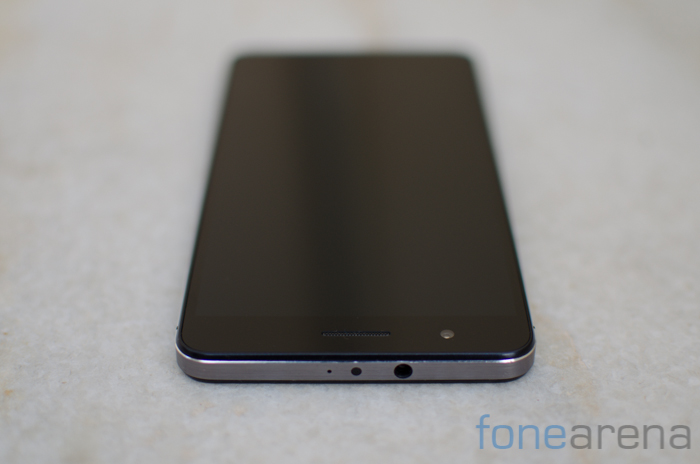
The front of the handset is as plane jane as they come. The large 5.5 inch display is set into a black panel and the bezels are thankfully really slim. Not only does this enhance the visual appeal of the phone but also greatly improves the ergonomics. Using this handset in one hand might be tough but is not impossible. Above the display lies the earpiece, the front facing camera and the usual range of sensors you’ve come to expect. Since the phone opts for on-screen controls, there are no capacitive buttons here.
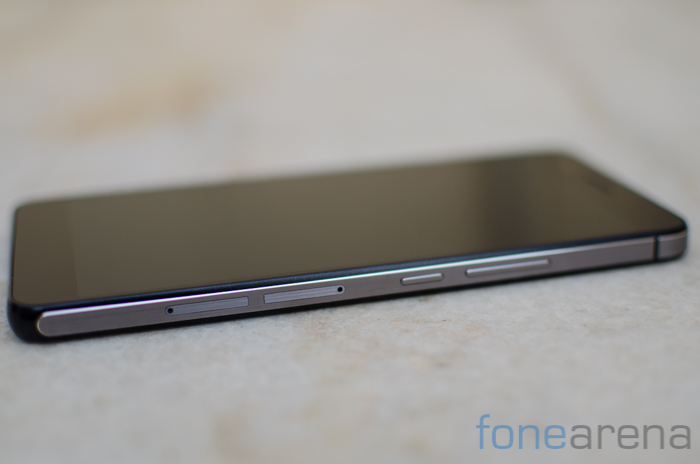
Over on the right side of the Huawei Honor 6 Plus, you will find pretty much all the hardware interface elements as well as the connectivity options. A volume rocker is placed right at the top. Following this is the power key. Both the buttons are well located and can be easily reached even with one handed operation. We found the volume rocker to be a bit too flush with the handset but that is something we got used to over time. Moving on, you’ll find two slots built into the phone.
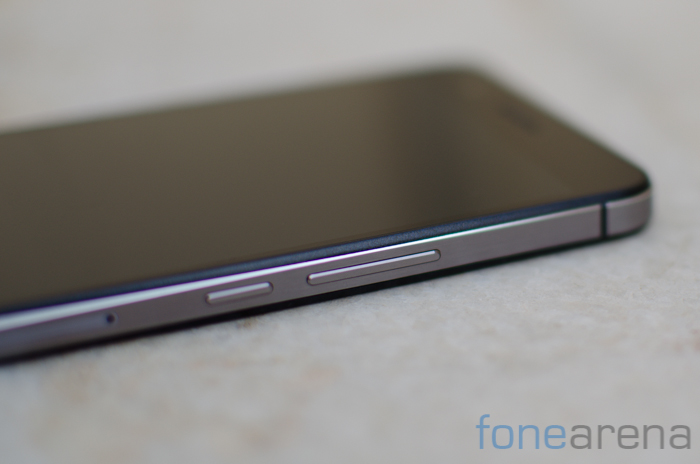
The lower slot houses the standard micro SIM card for your phone. The secondary slot on the other hand is somewhat interesting. Despite the phone being advertised as a single SIM device, the secondary slot can take both a microSD card or a nano SIM card depending on your choice. The caveat here is that the Indian units simply don’t recognize the secondary SIM card due to a software lockout. Is it possible that an enterprising developer might enable dual SIM support on the Honor 6 Plus? Your guess is as good as ours.
The rear panel has a slight mesh like pattern etched into it with a Gorilla Glass layer on top of it. The top left side has the dual camera modules with a dual LED flash next to it. The cameras sit in an island of sorts which should provide a modicum of protection albeit not much. Overall the phone doesn’t stretch the boundaries of design much. It’s yet another above average looking handset.
The Huawei Honor 6 Plus is powered by an in house Kirin processor. The HiSilicon Kirin 925 processor is an octa core unit in a big.LITTLE configuration. You get four Cortex A15 cores clocked at 1.8Ghz for high performance activities while the remaining four Cortex A7 cores clocked at 1.3 Ghz will serve for simpler tasks. The latest generation Kirin processors support HMP ie Heterogenous Multi Processing so that the phone can automatically switch between core clusters and indeed individual cores for maximing battery efficiency and performance depending on the requirement at that moment. Paired with the Kirin 925 is a Mali T624GPU and 3GB of RAM. That last bit means that you’re virtually guaranteed to never run in to memory issues while multitasking.

You might be inclined to believe that since the processor is clocked lower than the Qualcomm toting competition, it won’t perform as well. While this might very well be true in terms of benchmarks which we’ll be looking at shortly. The proof in the pudding however is in the actual day to day performance of the handset. On this front, the handset excels. The device is a joy to use with fast and fluid transitions all around. Multitasking works well, while web scrolling remains fluid even when browsing multiple heavy websites and simultaneously switching between social media apps. We also ran a couple of games on the handset and they all performed without a hitch. Follow along for key benchmark scores from the Huawei Honor 6 Plus.

In the GPU centric Nenamark 2 benchmark, the Huawei Honor 6 Plus performs as well as you’d expect. With about 60.1 FPS, it is right in line with the likes of the Xiaomi Mi Note or the Desire Eye.
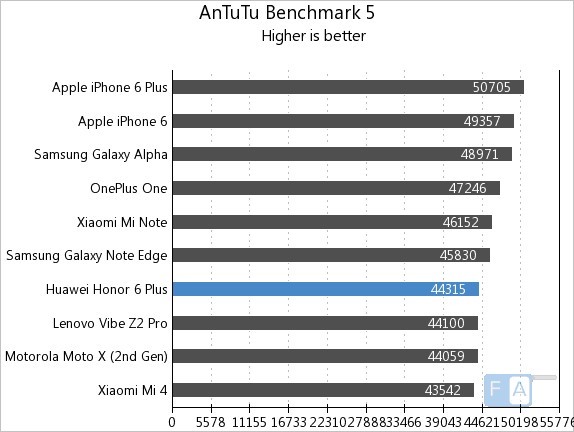
AnTuTu performance isn’t bad at all but doesn’t really compete with top end handsets. AnTuTu gives a cumulative score for performance across CPU, GPU and most other factors that affect day to day performance of a handset. The phone scores 44315 points here. All in all, the Huawei Honor 6 Plus might not be a scorcher in the benchmarks department but its got it where it counts and that is real life usability and performance.
Software
The Huawei Honor 6 Plus is powered by EMUI 3.0 or… Emotion UI as Huawei prefers to call it. It isn’t very original and isn’t all that different from what you’ve come to expect in terms of skins. There are some nifty features here and there but for the most part it is like most Android OEM’s efforts to shoehorn the iPhone interface into Android and create a somewhat appealing amalgam out of it.
The lockscreen on the Honor 6 Plus is a very clean affair with the focus solely being on the wallpaper used. The phone cycles through images every time you unlock the handset but you can change that behavior of course. Swiping up reveals quick shortcuts that let you manage music playback and also give you shortcuts for oft used apps including the sound recorder, calculator, torch and the camera.
A quick swipe from the right and you end up in the app drawer or homescreen. Like most other third party skins, this is a very iPhone like arrangement where there is no submenu for applications. The homescreen is where the action is with folders being the sole means for the managing your lesser used apps. Its not a bad arrangement but it does inhibit some of the inherent functionality of Android. There’s nothing stopping you from installing a third party launcher to get a stock like interface though.

Dropping down the notification bar gives you a glimpse of additional changes made by Huawei. The notifications bit of the dropdown has a very cool timeline view of upcoming appointments and any unread messages. Tap the settings section and you have the standard Android notifications hub just redone to fit within the design scheme in place. Overall, the design of the Huawei Honor 6 Plus resembles most other efforts by the likes of Lenovo, Gionee and even Xiaomi but for what it’s worth, it doesn’t look all that bad and the performance is smooth and slick.
Camera
Let’s talk about the USP of the Honor 6 Plus, its claim to fame or raison d’etre if you will is the dual camera set up at the rear of the handset. The two cameras enable the software to extract depth information from the images and can help you get better shots or at least that’s what Huawei says.
The company has been a bit coy to divulge exact information about the camera set up on the Honor 6 Plus but we do know that it employs Sony sensors and has a pixel size of about 1.98 micrometer. On paper that sounds pretty impressive. Our tests with the camera somewhat backed that up as shots in daylight and even in well scenarios indoors were quite good. Case in point being the flowers below which were lit up just by a single lamp.
The handset’s low light mode brought up the exposure and gives us a shot that is quite visually appealing. Very low light shots too are quite nice though you do end up with a fair bit of noise which in some cases might make the photograph quite unusable. The phone captures 1080p footage but the lack of OIS (Optical Image Stabilization) means that video can be quite jerky.

The dual camera setup and the flexibility in focusing brought up by it were mostly a gimmick. The software will allow you to simulate from anywhere between f0.95 to f16 but the final result doesn’t look very natural and seems like something that could’ve easily been replicated in software without requiring the extra hardware. In the photograph embedded above, you’ll see that adjusting focus in post processing has made the trees in the background look like a cutout. In fact the full resolution shot makes the entire blurred out area like something we’ve added in Photoshop. Not something you want in your photographs. The image on the right on the other hand shows a well balanced shot without any such issue. Our suggestion? Avoid messing around too much with the camera here. In what is a rare situation, the Honor 6 Plus delivers better images in automatic mode than with manual adjustments. Follow along for additional samples from the Huawei Honor 6 Plus.
Connectivity / Storage / Battery Life
Like any modern high end handset, there are certain baseline specifications you expect from the device in terms of connectivity options. The Huawei Honor 6 Plus meets all those expectations and has support for the usual bluetooth, WiFi b/g/n/ac standards. You also get 4G LTE Cat6 / 3G HSPA+ support in addition to GLONASS and GPS for positioning. The phone includes an NFC antenna too. The Honor 6 Plus is available in both 16 and 32GB variants with microSD expansion available alongside. In our 32GB unit, we had a little over 25GB available as free storage. While not as bad as some of the other device vendors out there, it certainly doesn’t bode well for the 16GB unit which should have about 9GB or so of free space by our approximation. The 3600 mAh battery built into the phone is better than most out there and works well to ensure great standby times. With active usage we could easily get through a full work day and a bit of the next one. Software optimizations and the large battery capacity means that you can get about two days of light usage from the Honor 6 Plus though we’d charge it overnight just to be on the safe side.
Display
While having a large 5.5 inch display means that your handset is going to be large, Huawei has done quite a bit to make it as ergonomic as possible. Part of this is reduction in bezel size. With a 72.8% screen to body ratio and bezels that measure just 2.8mm on both sides, the handset comes out as fairly compact. The tiny bezels further accentuate the design and make the phone look visually appealing to boot. It doesn’t hurt that the panel used is amongst the best 1080p panels we’ve come across so far. More on that below.

The screen is a 5.5inch panel as we’ve mentioned above and covers 85% of the NTSC spectrum. The brightness levels are absolutely top notch and we had no issues using the device even in bright sunlight. The colors are nice and well saturated but still manage to look natural. The display has a 1500:1 contrast ratio.
Conclusion
Without a doubt, the Huawei Honor 6 Plus is a very nice phone. We loved the display and the performance is top notch. While the design isn’t the best we’ve seen around, it isn’t quite an eyesore either and the high quality materials used do redeem it to a certain degree. Add to that the intriguing though gimmicky dual camera setup and you’ve got a device that offers quite a bit which should make it a sure shot recommendation. So is the Huawei Honor 6 Plus our go to handset in the sub Rs. 30,000 category? Not quite.
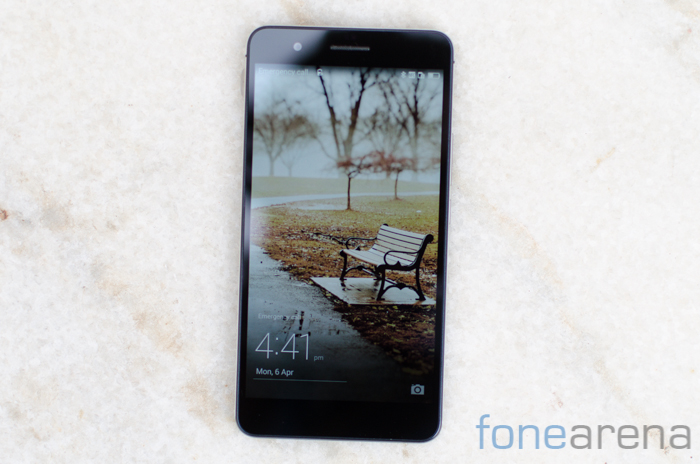
There’s a lot that the Huawei Honor 6 Plus offers and you certainly can’t go wrong with it but at Rs. 26,499 you really are paying a premium for the questionable dual camera set up. Photographs from the handset proved to be better when we avoided messing around with the focal length and honestly were no better than most other competing devices. The popular and highly rated Galaxy S5 is now down to a very similar price point and better equipped devices like the Xiaomi Mi4 and the OnePlus One are actually priced lower which makes it hard to make the Honor 6 Plus our sole recommendation. Want the convenience of easily flashing ROMs on your handset? Consider the OnePlus One. Want oodles of built in storage and something more handy? Go for the Xiaomi Mi4. But if it is a nice well rounded package with a good camera, memory expansion and a large display that you’re after then the Huawei Honor 6 Plus proves to be a worthy contender. It’s a great time to be a consumer!
Pros
Cons
- Dual camera set up is gimmicky
- Speaker could be louder
